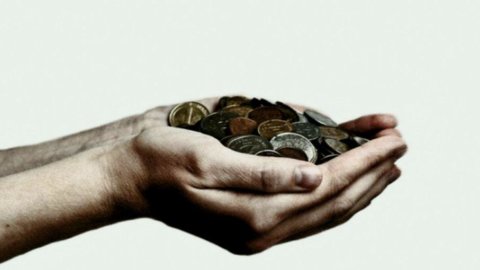The markets have never experienced a period of such low interest rates for so long. At the same time, the world in which we move has changed structurally. What to expect from investments? How to manage your savings? Here is a small guide that emerged from the discussion of five experts during the round table "Investing in global markets: portfolios for the new economy", organized by Bpm on the occasion of World Savings Day.
PAST TRENDS ARE HARDLY REPEATABLE
After falling sharply between 2008 and 2009, stock markets have now been on the upswing for 5-6 years. “The cycle is starting to be quite long, mature – said Armando Calcaterrza, investment director of Anima Sgr – In any case, it seems difficult for us to think of a strong slowdown in the short term, provided that the emerging markets stabilize. We believe there is a possibility that the cycle will continue. Even if such strong and defined trends in the equity and bond markets as those of recent years will be difficult to repeat".
In other words, experts believe that the cycle will continue, albeit at slower than historical rates, and with no major shocks in sight. “From this point of view – explained Carcaterra – the portfolio can take a little risk with exposure to equity markets, we prefer Europe. The portfolio must then be more diversified also on the bond side, also providing for currency diversification. And you don't always need to be fully invested but have a precise strategy in managing flexibility".
DIVERSIFY BEYOND THE ASSET CLASS
Once the old saying “don't put all your eggs in one basket” seemed to suffice. In other words, he advised against investing all of one's money in just one asset class (such as shares) or in a single stock. But do a mix. Today even this task is more difficult. “The European crisis – explained Andrea Delitala, Head of Investment Advisory at Pictet Asset Management – has made the behavior of the BTP more similar to the behavior of a share, the negative correlation has disappeared but the correlation is positive. We are increasingly orphaned of the possibility of diversifying the portfolio in a useful way, because it is no longer enough to diversify by asset class but it is necessary to diversify by phenomena that have the same effects".
Which means looking within the asset class for those investments that deviate from the main direction. “For example, in the case of government bonds – said Delitala – we think of the bund indexed to inflation. Second-level choices are often preferable to first-level ones”.
UNDERSTANDING THE INTERACTION OF CENTRAL BANKS
The yields of BTPs ended up in negative territory for the first time: there are those who have chosen to "pay" in order to park their money in Italian debt securities at six months. To most, these returns appear meaningless. What is going on? “Today, understanding central banks is much more important to understand where future returns will go – says Marco Spaltro, vice president Portfolio manager of Morgan Stanley's Global Fixed Team – We are in a global chess game, in which central banks compete bring back inflation. But the more a central bank cuts rates, the more it shifts deflation elsewhere.”
Thus, after the intervention of the ECB in which it opened up to Qe2, China declared a new rate cut, then it was the turn of Sweden which expanded the Qe program and finally Norway which announced the reduction of the cost of the money. “We need to understand the interaction of central banks – said Spaltro – not just what the individual central banks do. We go to countries where the central bank is behind the curve, for example in Eastern European countries such as Poland, Hungary, Romania.
STILL VALUE OF THE TEN-YEAR BTP
The flood of money from the ECB is prompting investors to look for higher yielding stocks. “In fixed income – explained Nicola Mai, Senior Vice President, Portfolio Manager European Rates of Pimco – we extend along the curve, with intermediate maturities of 5-10 years where the curve is quite steep. for credit products it is worth taking more risk. Even for the 100-year BTP, XNUMX basis points above the Bund for such a low risk, it is difficult to find in other asset classes. There will also be further compression."
Indeed, government bonds are benefiting from the flood of liquidity arriving from Frankfurt. And a new intervention is now expected from ECB president Mario Draghi, as early as next December, which will expand the securities purchased, including local and non-government bonds. “It is then possible that I buy shares, but not already in December. Finally, it is possible that it buys corporate bonds but the impact of this move will be limited”. Out of 500 billion euro of corporate bonds, the ECB can in fact assume to buy 20%, about 100 billion. Which means, at the current rate, a month and a half of shopping.
THE DYNAMIC WALLET
Paradoxically, today's experts see the dangers most concentrated in bonds and not in equities. "The average portfolio of Italians, with 52% of bonds, is not structurally correct, because we are still living in the era of Bot people," said Gianfranco Venuti, head of Private Banking & Wealth Management at BPM. Italy is not only unbalanced in comparison with the United Kingdom, where the equity component has always been greater, but also in comparison with countries more similar by tradition, such as Spain. "From the old portfolio concentrated on domestic yields - said Venuti – we need to move to a more diversified portfolio, not only in terms of asset class but also in terms of geography and sector, and dynamic.





